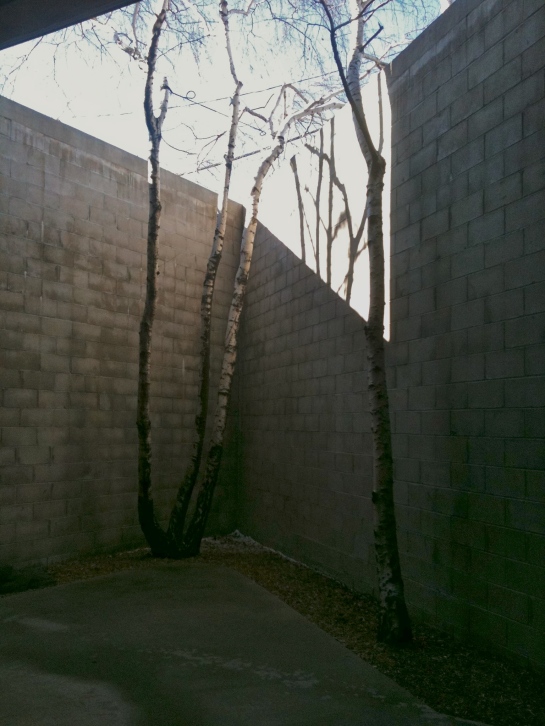“You can find out how to do something and do it, or do something and then find out what you did.”
Isamu Noguchi.
I’ve been meaning to write about my visit to the Noguchi Museum in Astoria/LIC last weekend. I wasn’t sure if I was going to write on my art blog or this one, but it’s here for now.
I hadn’t heard of Isamu Noguchi before, so going to the museum was sort of on a whim, after a friend mentioned I should check it out. It was a sunny Sunday morning. I got coffee at Bakeway first (very good coffee, pretty good banana bread), which is on Broadway in Astoria, then walked straight to the sculpture garden. It was really cold that day, so my fingers were freezing, but I caught a glimpse of a cat wandering around the sculpture garden (separate from the museum), and took some pictures. Seems like it will be a good place to return in the warmer months.

Kitty
The Noguchi museum is part indoor and part outdoor, as there is a garden as well as some parts of the former warehouse-turned-museum that are open-air. This is something the sculptor/landscape architect designed to be a sort of culmination of his major works, and which now serves to carry on his legacy, in a city where he’d previously had a studio (he worked primarily in New York and in Japan, if I remember correctly, though he travelled a lot as well).
Upon entering, and again, knowing nothing of this artist — I merely wandered through the clearly Asian-influenced sculptures and the garden filled with rocks, trees, and stone works. Hm. Interesting. Peaceful. Thoughtful… Meditative. Buddhist? Nature?

I sat down in a room that was showing a film about Noguchi’s life, not expecting to end up sitting there for an hour.
But I was sucked into the narrative of his life. Not only was his work interesting, but his life — his character, his way of living, his approach, even the way he dressed and held himself — fascinated me. Noguchi was born the son of an American woman and a Japanese man — a poet — who later left Noguchi’s mother for a Japanese woman and family. Noguchi and his mother remained in Japan throughout his childhood, which influenced him deeply in his work. Yet despite the extent to which he was constantly drawn to his roots – the culture, nature, and way of life in Japan – he was an international traveler, and gained inspiration from his travels in Europe, Mexico, and Asia. This, and he was caught between being half American and half Japanese during WWII, when he didn’t feel at home in either country. And he continued to attempt to connect with his father, to much frustration.
But while he seemed to be the child of an identity crisis both personally and politically, the consistency in his work and the way he held himself seems to be unwavering, like he was always quite certain of himself and his talent. While macho American artists like Jackson Pollock, hailed by Greenberg, were busy strutting their feathers in New York during the art world shift in the 40’s and 50’s (when abstract expressionism took center stage), Noguchi, whose work was more low-key and ground-level and thus not in the ring of fire, remained on the fringes of the art world doing his own thing. He drew up plans for architectural installations, gardens, public sculptures, and even worked on set designs for Martha Graham’s performances. His work was natural, earthy, organic, albeit borderline conservative in some ways — but I was drawn to this, to this merging of art and life that he seemed to do so well, so naturally, so artlessly.

At a certain point, Noguchi grew tired of the “politics” of the art world and returned to Japan (he did this several times throughout his life) — where he carved a studio space for himself in the country, and with the help of an assistant continued experimenting with myriads of stones and materials. There was an interesting quote in the film, and though I wrote down the jist of it, this isn’t verbatim: “Work is like a conversation with oneself; through trial and experimentation, you try to nail something down.”
His assistant spoke of Noguchi: “If he made a mistake and cut too much on a stone, he would be disappointed. If he left the stone for a while, a year or two, the stone would heal like a cut in the hand. Perhaps the thought in his mind had changed, but the stone had also changed color, and the beauty began to emerge again.”

At the moment this may be my favorite picture of Noguchi. He’s dressed so sharply yet so simply, an outfit so ordinary yet striking at the same time — artist + camera exploring the world.

